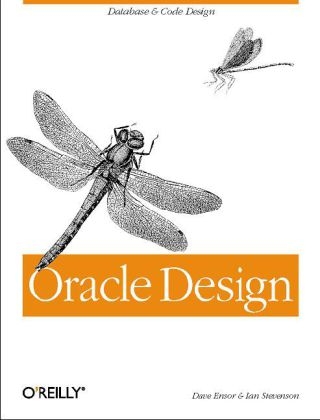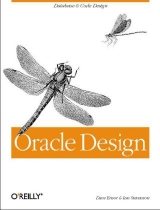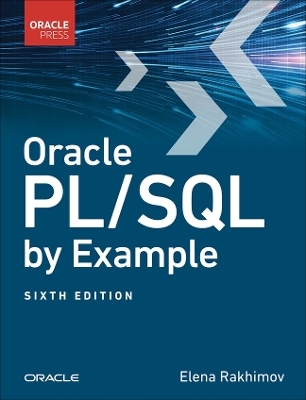Oracle Design
O'Reilly Media (Verlag)
978-1-56592-268-6 (ISBN)
- Titel ist leider vergriffen;
keine Neuauflage - Artikel merken
Oracle Design looks thoroughly at the field of Oracle relational database design. The design of both databases and applications is an often neglected area of Oracle, but one that has an enormous impact on the ultimate power and performance of a system. If the initial design is poor, then the most powerful hardware, the most sophisticated software tools, and the most highly tuned data and programs won't make your system run smoothly and efficiently. Indeed, applications that have been designed poorly will never be able to perform well, regardless of the tuning and retrofitting performed later on. There are three main areas of Oracle design: The design of the specific database objects (e.g., tables, views, indexes, stored functions) that will be implemented in a database. The design of the screens, reports, and programs that will maintain the data and allow inquiries against it. Under certain circumstances, the design must also be concerned with the specific environment or technology (e.g., the network topology, the hardware configuration, and the use of a client/server, parallel processing, or distributed database architecture).
This book examines all aspects of database and code design. Part I examines the project life cycle and where design fits in that cycle; it shows a sample case study, identifies the areas of Oracle7 that are of particular interest to designers, takes a look ahead at Oracle8, and provides an in-depth discussion of data modeling (e.g., entities, relationships, attributes, entity models, function hierarchies). Part II describes design issues for the database itself -- denormalization, data types, keys, indexes, temporal data, import/export, backup, recovery, security, and more. Part III explores design issues for specific architectures and environments -- client/server, distributed database, data warehouses, and parallel processing. Part IV describes design issues for the code that accesses the database -- metrics and prototypes, locking, the toolset, design of screens, reports, batch programs, etc. Part V contains summary appendixes. The table of contents follows: Part I: Getting Started with Design 1. Introduction 2. Why is Design so Important for Oracle? 3. Data Modeling Part II: Designing the Database 4. Deciding When to Denormalize 5. Choosing Data Types and NULLs 6.
Choosing Keys and Indexes 7. Dealing with Temporal Data 8. Loading and Unloading Data 9. Deciding on Object Placement and Storage 10. Safeguarding Your Data Part III: Designing for Specific Architectures 11. Designing for Client/Server 12. Designing Distributed Databases 13. Designing for Data Warehouse 14. Designing for Parallel Processing Part IV: Designing the Code Modules 15. Introduction to Code Design 16. Determining Where to Locate the Processing 17. Metrics, Prototypes, and Specifications 18. Locking 19. Selecting the Toolset 20. Designing Screens, Reports, Batch Programs, Error Handling, and Help Part V: Appendixes A. Off-the-Shelf Packages B. Tricks of the Trade
Dave Ensor is manager of Worldwide Solutions, PATROL R&D, with BMC Software where his roles are to assist customers in their use of both BMC's PATROL product and the Oracle Server, and to feed the results of his field work back into product planning. He has more than 30 years of IT experience and has been involved with the design and performance issues surrounding Oracle since 1987. For many years he led Oracle Worldwide's Performance Studies Group based in the UK, which provided consultancy support to both customer and internal projects with critical performance requirements. Dave is well known as a speaker on performance management and design; he presents his papers at user conferences and writes and delivers one-day seminars. He lives in the UK just outside London, but spends much of the year traveling to user sites and meetings. In his spare time he also travels, but in this case without his laptop and with his wife. He can be reached at dave_ensor@compuserve.com. Ian Stevenson is a freelance consultant specializing in database design and development. He has worked with database technology for 19 years, starting with early hierarchical models. He worked for Oracle (UK) for two years in post-sales support and Human Resources Development. This is where he formed his friendship with Dave Ensor. Ian has a first class honours degree in mathematics from the University of Southampton and is a member of the British Computer Society. He is married to Brenda and has two children, Todd and Tara. He is a fanatic supporter of the Southampton football club. He can be contacted via ian@westmail.demon.co.uk.
Preface. I. Getting Started With Design. 1. Introduction What Is Design? A Case Study Looking at Alternative Methods and Approaches Planning the Design Phase Design Tasks. 2. Why Is Design So Important for Oracle? Designing for Specific Architectures Designing for Performance Other Design Considerations Designing for Oracle7 Introducing Oracle8. 3. Data Modeling Types of Models What Is Data Modeling? Entity Relationship Diagrams Quality-Assuring the Conceptual Information Model Entity Life Histories and Data Flow Diagrams Data-Driven Design and Meta Models. II. Designing the Database. 4. Deciding When to Denormalize Denormalization: What, Why, and When? Methods of Implementing Denormalization Other Types of Denormalization. 5. Choosing Datatypes and Nulls Available Datatypes Numeric Data Date and Time (Temporal) Data String Data Unstructured Data and BLOBs Other Datatypes Null Values. 6. Choosing Keys and Indexes Primary Keys Other Keys Indexes: An Overview Index Types and Indexing Techniques. 7. Dealing with Temporal Data The Problem with Temporal Data Design Issues for Temporal Databases Temporal Data: A Summary. 8. Loading and Unloading Data Dealing with External Systems Data Compatibility Issues Data Migration Steps Data Transformation File Formats Ordering, Recovery, and Commit Frequency Using SQL*Loader Oracle7 to Oracle7: a Special Case Outbound Data. 9. Deciding on Object Placement and Storage Specifying Object Placement Sizing Specifying Storage Parameters Creating Scripts Implementation Planning. 10. Safeguarding Your Data Archiving Auditing Security Backup. III. Designing for Specific Architectures. 11. Designing for Client/Server Why Client/Server? What Is Client/Server? What Kind of Hardware? Basic Design Issues for Client/Server Designing for Client/Server SQL*Net Basics Anatomy of a SQL Statement Cutting in the Middle Man Special Design Considerations. 12. Designing for Distributed Databases When Should You Use Distributed Databases? Evolution of Oracle Support for Data Distribution Selecting a Data Distribution Strategy Example Scenarios Using Distributed Database for Fallback Other Design Considerations Data Distribution Summary. 13. Designing for Data Warehouses Why Data Warehouses? What Is a Data Warehouse? Design Issues for Data Warehouses Extracting and Loading the Data Meta Data Transformation Types and Methods Retrieving the Data via Data Mining and OLAP Tools. 14. Designing for Parallel Processing Why Do We Need Parallelism? Designing to Achieve Parallelism Parallel Query Option (PQO) Oracle Parallel Server (OPS). IV. Designing the Code Modules. 15. Introduction to Code Design Analysis Deliverables Mapping Functions to Modules Don't Forget the System Modules Source and Version Control Template Code Designing for Testing CASE Products in Run Unit Design. 16. Determining Where to Locate the Processing Data Rules vs. Process Rules vs. Interface Rules Logic Placement Locking Issues How Does This Relate to Three-Tier Architectures? 17. Metrics, Prototypes, and Specifications Developing Design and Build Metrics for Modules Banishing Megamodules Shall We Prototype? Where are my Specs? Guidelines for Module Specifications Specifying Screens and Reports Specifying Batch Processes. 18. Locking Locking Strategies Deadlocks Serializability Other Design Issues. 19. Selecting the Toolset Types of Tools Which Selection Criteria Are Important? Client/Server Tools Designing for the World Wide Web. 20. Designing Screens, Reports, Batch Programs, and More Designing Screens Designing Reports Designing Batch Programs Error Handling Navigation Online Help. V. Appendixes. A. Off-the-Shelf Packages Evaluating a Package Does It Fit? Can It Be Tailored? The Big Data Model Issue. B. Tricks of the Trade Fixing Those Mutating Tables Dealing with the Millennium Date Problem: An Oracle Perspective Providing User Extensibility. Index
| Erscheint lt. Verlag | 8.4.1997 |
|---|---|
| Verlagsort | Sebastopol |
| Sprache | englisch |
| Einbandart | kartoniert |
| Themenwelt | Informatik ► Datenbanken ► Oracle |
| ISBN-10 | 1-56592-268-9 / 1565922689 |
| ISBN-13 | 978-1-56592-268-6 / 9781565922686 |
| Zustand | Neuware |
| Informationen gemäß Produktsicherheitsverordnung (GPSR) | |
| Haben Sie eine Frage zum Produkt? |
aus dem Bereich



